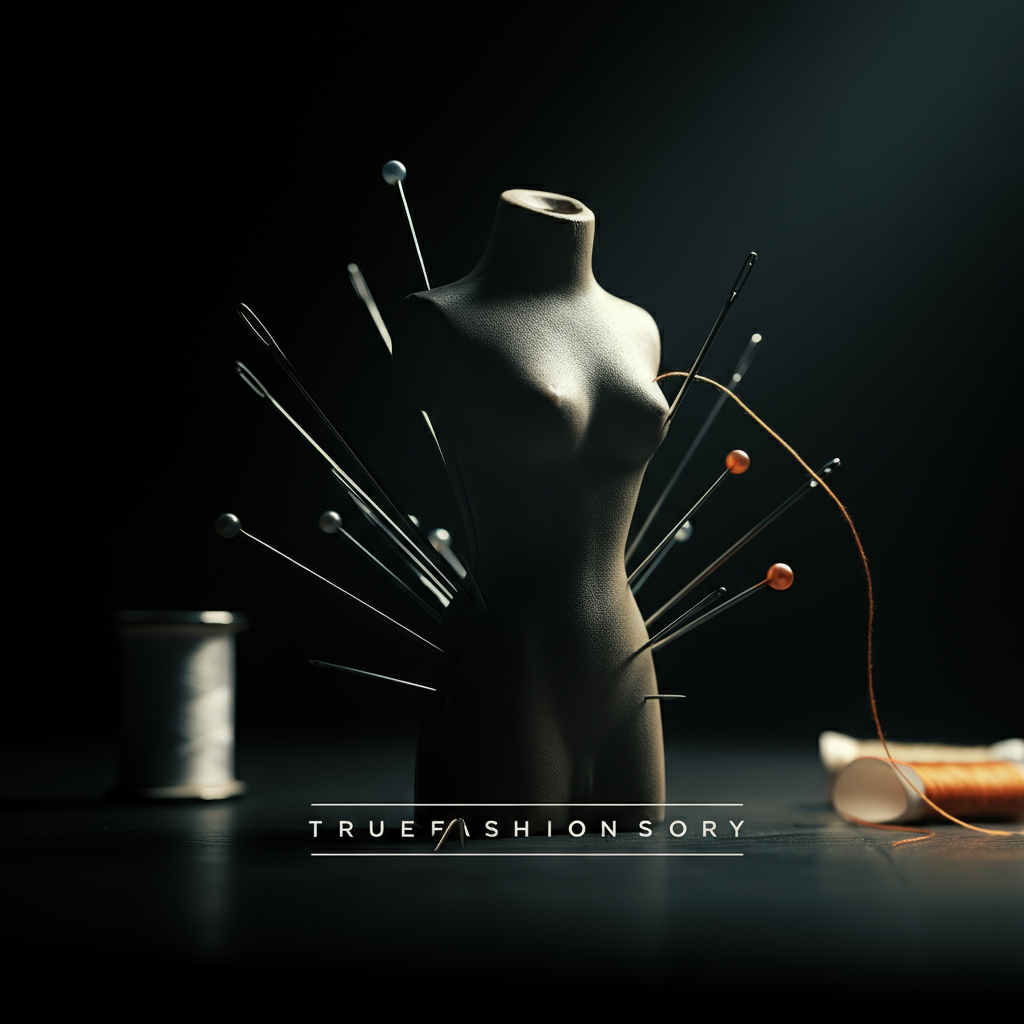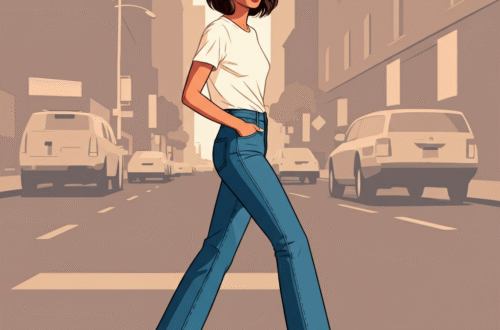Have you ever stumbled upon a title so strange you just had to click? “I Was a Fashion School Serial Killer” is one of those phrases. It’s jarring, intriguing, and frankly, a little confusing. Let’s be clear: this isn’t a true crime confession. Instead, it’s the title of a captivating fictional story that has taken certain corners of the internet by storm. This article will unpack the meaning behind the sensational title, explore why it resonates with so many, and dive into the creative world from which it emerged.
So, what is the “Fashion School Serial Killer” story really about? It’s a work of fiction, often found on creative writing platforms, that uses the dramatic title as a metaphor. The “killing” isn’t literal. It refers to “killing it” in the fashion world—crushing competitions, outdoing rivals with stunning designs, and metaphorically slaying the runway. It’s a story about ambition, rivalry, and the intense pressure of fashion school.
Key Takeaways
- The phrase “I Was a Fashion School Serial Killer” is the title of a fictional story, not a real event.
- The “killing” is a metaphor for succeeding and dominating in the competitive fashion industry.
- The story explores themes of ambition, creativity, rivalry, and the high-stakes environment of design schools.
- Its popularity stems from its clever title, relatable themes for creative individuals, and engaging narrative style.
- Understanding this story provides insight into how creative communities use figurative language to describe their experiences.
The Real Story Behind the Sensational Title
When you first read the title, your mind might jump to dark, true crime documentaries. But the reality is much more creative and far less grim. The story is a piece of narrative fiction that cleverly uses a shocking title to grab your attention. It’s a classic bait-and-switch, but one that leads readers to a surprisingly relatable and engaging tale about the cutthroat world of fashion design.
The author uses the term “serial killer” as a powerful metaphor. The protagonist isn’t harming people; they are consistently and ruthlessly “slaying” the competition. Each project, each runway show, each critique is a new victim of their overwhelming talent and dedication. This figurative language paints a vivid picture of a world where creativity is a weapon and every design is a battle.
Decoding the Metaphor: What Does “Killing It” Mean?
In the context of fashion, “killing it” or “slaying” means to perform exceptionally well. It’s about creating a design so brilliant that it leaves everyone else in the dust. The protagonist of the story does this repeatedly, earning the figurative title of a “serial killer” of the fashion scene.
- Winning Competitions: Consistently delivering the most innovative and well-executed designs.
- Impressing Instructors: Earning top marks and praise from notoriously tough professors.
- Outshining Peers: Creating looks that make other students’ work seem amateur in comparison.
- Dominating the Runway: Presenting collections that are the talk of the show.
This metaphor speaks to the immense pressure students face. Fashion school is not just about sewing and sketching; it’s a high-stakes environment where only the most driven individuals succeed. You can find more discussions on the pressures of the industry over at the truefashionstory.comBlog.
Why the High-Fashion World Is So Cutthroat
The story resonates with so many because it accurately portrays the intense atmosphere of creative industries, especially fashion. From the moment students enroll, they are pitted against each other. Admission is exclusive, classes are demanding, and the ultimate prize is a foothold in an industry with very few spots at the top.
The Pressure Cooker of Design School
Fashion schools are designed to weed out the hobbyists from the future professionals. The curriculum is grueling, often requiring students to pull all-nighters to finish a single garment. Critiques, or “crits,” are a core part of the experience, where students present their work to a panel of instructors and peers who then publicly dissect it. This process can be brutal, but it’s meant to build the thick skin needed to survive in the professional world.
From Classroom to Career: A Fierce Competition
The competition doesn’t end at graduation. The fashion industry is famously exclusive. Landing a job at a prestigious design house or successfully launching your own label requires more than just talent. It demands networking, business sense, and an unwavering belief in your own vision, even in the face of rejection. The story captures this reality, showing a protagonist who understands that to make a name for themselves, they have to be better than everyone else, every single time.
Analyzing the Main Character: Ambitious or Obsessed?
The protagonist of “I Was a Fashion School Serial Killer” is a fascinating character. They are undeniably talented, driven, and focused. But as the story unfolds, the reader is left to wonder: where is the line between healthy ambition and dangerous obsession?
The Drive to Succeed
At its core, the character’s motivation is a powerful desire to succeed. They eat, sleep, and breathe fashion. Every waking moment is dedicated to honing their craft, conceptualizing new designs, and executing them perfectly. This level of dedication is what sets them apart. They aren’t just participating in fashion school; they are determined to conquer it.
The Darker Side of Ambition
However, the “serial killer” moniker hints at something darker. The character can be seen as ruthless, viewing their peers not as colleagues but as obstacles to be overcome. Their single-minded focus may come at the cost of friendships, personal well-being, and perhaps even their own creative joy. The story serves as a cautionary tale about how the pursuit of success can sometimes consume a person, turning a passion into a battlefield.
|
Trait |
Ambitious Perspective |
Obsessive Perspective |
|---|---|---|
|
Work Ethic |
Pulling all-nighters to perfect a project. |
Neglecting health and relationships for work. |
|
View of Peers |
Healthy competition pushes them to be better. |
Sees classmates as rivals to be defeated. |
|
Motivation |
A deep love for fashion and design. |
A desperate need for validation and victory. |
|
Creative Process |
Pushing boundaries to create something new. |
Willing to sabotage or steal ideas to win. |
The Appeal of the Story: Why It Went Viral
A story with such a niche theme and provocative title could have easily disappeared into the vastness of the internet. Yet, it found an audience and became a talking point in many online creative communities. Its success can be attributed to a few key factors.
First, the title is brilliant marketing. It’s unforgettable and creates immediate curiosity. Second, the story is highly relatable to anyone who has ever pursued a creative passion. Whether in writing, art, music, or fashion, the feelings of competition, self-doubt, and the exhilarating high of a creative breakthrough are universal. The story puts words to an experience that many creatives feel but struggle to articulate.
Finally, the narrative is simply compelling. It’s a well-written piece of fiction with a strong protagonist and a clear, engaging plot. It draws the reader into the high-glamour, high-stress world of fashion and makes them root for the “killer,” even as they question their methods.
Final Thoughts: A Story of Passion, Not Violence
“I Was a Fashion School Serial Killer” is a testament to the power of creative language. It takes a familiar, intense experience and frames it in a way that is fresh, exciting, and memorable. The story reminds us that in the world of art and design, passion can feel like a life-or-death struggle. The “killing” is metaphorical, representing the act of pouring your entire soul into your work and coming out on top. It’s a celebration of ambition, a warning about obsession, and a captivating read for anyone who has ever dared to chase a creative dream.
Frequently Asked Questions (FAQ)
Q: Is “I Was a Fashion School Serial Killer” a true story?
A: No, it is a work of fiction. The title uses a metaphor to describe a student’s ambition and success in the competitive environment of fashion school.
Q: Where can I read the story?
A: The story is often found on creative writing websites and platforms like Reddit, Wattpad, or Archive of Our Own (AO3). Searching the title on these platforms will likely yield several versions and interpretations.
Q: What is the main theme of the story?
A: The primary themes are ambition, competition, and the intense pressure within creative fields. It explores how far someone is willing to go to achieve their dreams in a cutthroat environment.
Q: Who is the target audience for this story?
A: While anyone can enjoy it, the story particularly resonates with students, artists, designers, and anyone in a highly competitive industry. It speaks to the universal struggle of trying to “make it.”





